Entries tagged with “SDS”.
Did you find what you wanted?
Tue 5 Nov 2013
Posted by admin under Federal OSHA, GHS, Hazard Communication, Management, MSDS, OSHA, Personal Protective Equip (PPE), Safety Programs, SDS, Training, Uncategorized
Comments Off on Hazard Communication with GHS – SDS/MSDS
If you live in the United States, you have less than one month to train your employees on the new Hazard Communication standard (1910.1200(h) & 1926.59), which should include information about the new types of Safety Data Sheets (formerly known as MSDS) and the adaptation with the Global Harmonization System (GHS). December 1, 2013 is the enforcement start date for OSHA. Don’t make this complicated, it is straightforward. Here’s what you should do:
- Train employees in hazard communication (simply: so they know the hazards they are working with)
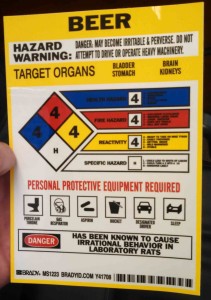
- Document your training (in case of an OSHA inspection)
- Show them a sample Safety Data Sheet (SDS), compared with the old MSDS
- Explain that the new SDS will not be available immediately, but will roll-out over a few years (or more)
*Please note the “Beer” hazard warning on the right is not GHS compliant.Â
For Help:
Mon 18 Feb 2013
Reviewing a material safety data sheet (MSDS), or soon to be called a SDS (safety data sheet), can be a useful skill. Most times the product is straightforward and gives you what you need. However, there are somethings to watch for and areas to focus to make your reviewing skills better.
To start, Â make sure you have the right SDS. Match the product with the form. If is is not exactly right, find the right one. It must list the model/product name & manufacturer.
Below are some suggestions: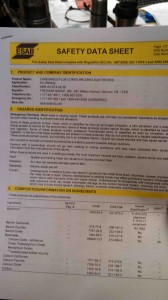
- What is the date of the SDS?
- is it the most recent?
- when was it last updated?
- Look at section 2/3 (Hazardous components) VERY carefully.
- google the CAS# and find the name (they sometimes hide the true-name)
- look at the % of each component
- what is the listed exposure limit? Is it correct? What about other recommended limits?
- remember the hazard is only listed in this area if it is greater than 1% of the total
- Look through each section mindful of how you will be using the product.
- for example: if you are going to be burning the product, usually the SDS will not address these types of concerns/exposures
- what are the required PPE during “regular use”
- what happens if you use this product in a confined area?
- does the manufacturer recommend air monitoring? when?
- Familiarize yourself with the emergency procedures
- what if it spills?
- disposal?
- what can cause exposure? inhalation? skin?
- Look at the other sections with a inquisitive eye
- do they list other chemicals, which are NOT included in the product section? why?
- do they mention Proposition 65?
- Finally,
- post/make available a copy wherever it’s needed
- make sure you know the product
It is a mixed-bag when it comes to the quality of SDS from a manufacturer. Some of them will work with you, others are a total-pain. Remember it is YOUR RIGHT to know about the products you use. If you don’t feel comfortable with the information they’ve given you, call them. OR, go find another product.
Fri 11 Jan 2013
Posted by admin under Air Monitoring, Carcinogen, EPA, MSDS, Proposition 65, SDS
Comments Off on Proposition 65 – why you should know about it
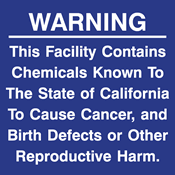 You may have seen a product label which states that, “this product is known to cause cancer”…if used in California. (ha)
You may have seen a product label which states that, “this product is known to cause cancer”…if used in California. (ha)
Proposition 65 is essentially a labeling rule. in 1986, California made a rule mandating anyone selling to California to label the product… if it had a serious health risk. This rule was above and beyond the OSHA reporting limit of 1%, like on a MSDS (henceforth called SDS, BTW).
The rule is actually good. It makes manufacturers tell you if there is anything hazardous in their product, or if they used anything hazardous when they made the product. (Side: If you haven’t heard, some manufacturers like to hide their ingredients, some say for proprietary reasons. Here’s an example)
More information about the rules is here. There is controversy over it’s usefulness (see here), but in this day in age, I believe you should be made aware of the information.
What usually happens is you find a SDS with no information about the product. Then, as you investigate, you find a “Proposition 65 warning”, indicating something about the product which, “may cause cancer”. So you ask, why does this happen? (more FAQ here) Well, the manufacturer used, or contains, something in their product that is hazardous. It can be a nice trail leading to chemicals which to sample for, or investigate.
Mon 3 Dec 2012
Posted by admin under ACGIH, Federal OSHA, GHS, industrial hygienist, Management, Misc, MSDS, OSHA, PEL (Perm Exp Limit), Risk, SDS
Comments Off on Why I’m excited about the new GHS rules
The new global harmonization system (GHS) is officially adopted by OSHA. Each state run program is rolling out their acceptance of the new changes. Where I live, we have until December 2013 to train employees in this new type of hazard communication.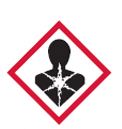
Honestly, I’m NOT too EXCITED about it. But, I’m trying to have a good attitude. Below are some good things which may occur:
- Raise the level of awareness of hazardous materials & their toxicity
- Train employees (hopefully, retrain) on how to handle chemicals
- More training = less citations. (?)Â OSHA’s top ten citations include #3 – hazard communication. Maybe people will actually do the training?! (my guess is that there will be more citations)
- Consistent information worldwide. Â All UN countries should have the same format. (this might take years)
- Proprietary information will be more visible on the SDS. In the new rules, manufacturers are required to list the % of their proprietary ingredients.
- Pictograms! They’re so cool. My favorite is the exploding person.
- Maybe this is my favorite?!: Manufacturers will have to look again at their products and classify them according to the physical & health criteria. Nowadays with more relevant information from worldwide occupational exposure limits, it might help make employers aware of the hazards.
- This might help OSHA enforce newer exposure limits (other than the 1978 AGCIH TLVs).
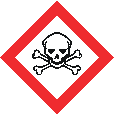
How do you plan on training your employees? If you need help, contact me here.




